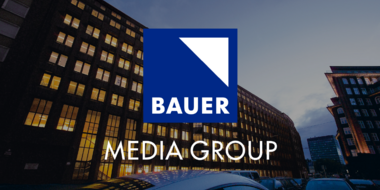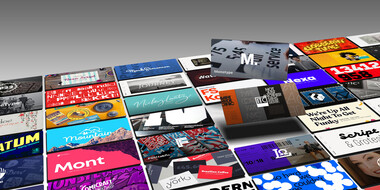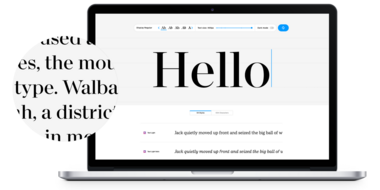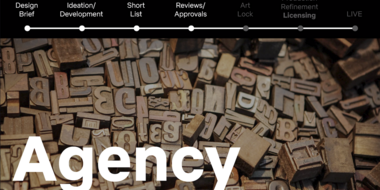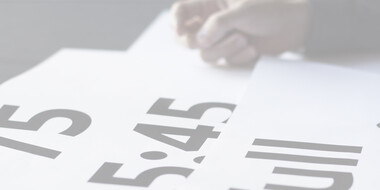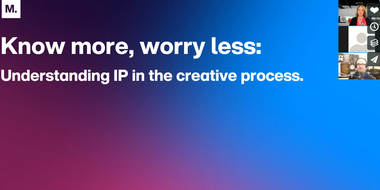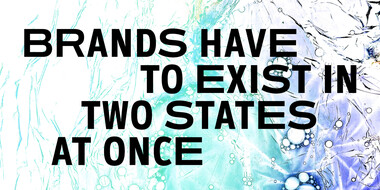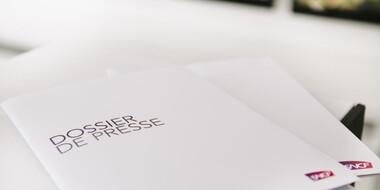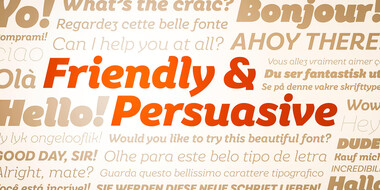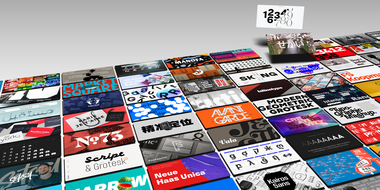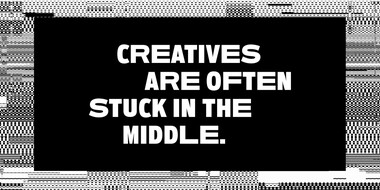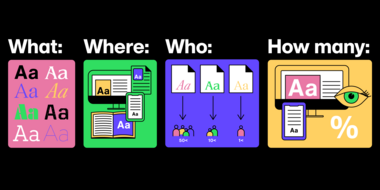
Font licensing
Graphic designers and other creative team members are usually the primary users of the fonts at a brand, which means they’re also responsible for ensuring those fonts are used properly according to their license.
Long gone are the days of zipping up folders of font files and sharing them across your organization, or even messier, embedding fonts in documents in the cloud in hopes that the design remains intact. We recently announced an expanded set of licensing rights which allows all employees within an organization to access Commercial Production Fonts in their desktop environments.
Bauer Media Group, an international multi-business company with hundreds of digital and print properties, implemented Monotype Fonts to serve fonts to hundreds of teams and thousands of employees across the world.
In a recent episode of our Creative Characters podcast, the conversation centered around how the futures we envision aren’t always practical for the reality we live in – both in sci-fi films and fonts in car dashboards.
A high-profile automaker recently reported strange rendering behavior in their automotive displays, which were using Monotype’s Helvetica Now font. The automaker shared access to their platform and font integration tools with us, concerned that the rendering issues were due to bad outlines in Helvetica Now.
Kevin Laurino, Manager of Art & Print Production, Retouching, and Finishing at Netflix, shares some experiences from his career-long relationship with fonts and how to tame the beast that is managing a brand’s font licensing. Here are some tips to help get you started.
Artists pour their heart and soul into their craft and creations and in an ideal world, every artist would be recognized and paid appropriately for their efforts. In reality, however, artists often have to fight for their rights to be upheld. This has been true for centuries and is only intensifying in the digital era.
Monotype Fonts is the only on-demand font service designed by creatives, for creatives—making it easier than ever to find, manage, and share the world’s best typography.
Kevin Laurino, Manager of Art & Print Production, Retouching and Finishing, at Netflix shares experiences from his career-long relationship with fonts and solutions his team has implemented to simplify licensing and improve collaboration.
Learn how you can develop a simple, more secure approach to font licensing that puts the focus where it belongs: on the creative work itself.
Mike Mandolese, Design Manager at HP Hood, explains how a quality-focused culture builds employee and customer trust and enables continuous improvement for design teams.
Brands today are connecting with customers across countless touchpoints – from LED billboards, to smartwatch apps to magazine ads. This provides countless opportunities for graphic designers and creative professionals to work on exciting projects, but designing for multiple environments at once has its challenges, too.
Modern brands are not static, stationary objects. Today’s brands need to be agile and adaptable, permanently poised to respond to shifts in consumer expectations, emerging technology, and opportunities in other regions and languages.
Corporate typeface helps a timeless railway company now and into the future.
Typeface design is a mysterious business. While most people are acquainted with the dropdown menu in Word or a website like MyFonts, not everyone realizes there’s a host of independent designers and foundries all quietly making their contribution to visual culture.
Adobe’s move to get out of the business of fonts as a standalone offering might be good for creative professionals, but what about enterprise customers?
Retail customers are scattered across a wide range of touchpoints and react with them all interchangeably. However, they’re all linked through the mobile experience.
Creatives are the primary users of the fonts, but licensing approval typically runs through other departments. Here are a few key concepts all designers should understand.

